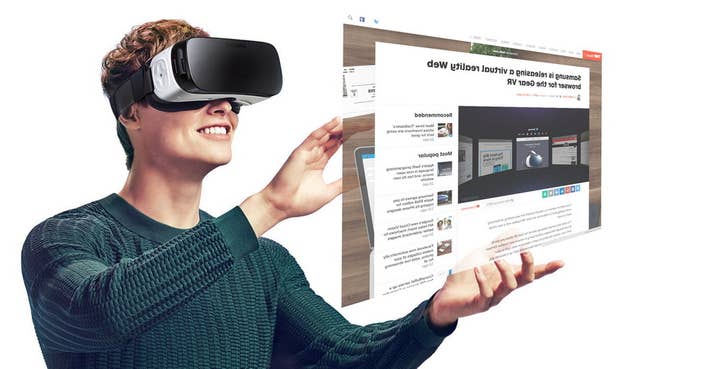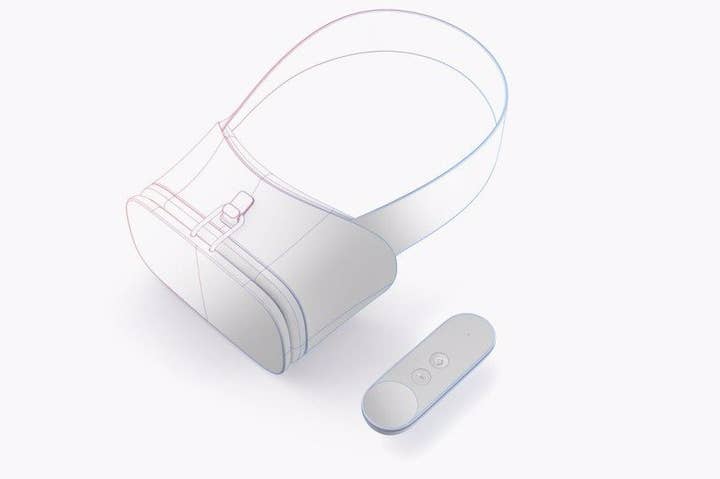The vanishing differences between mobile and desktop VR
"Very soon, the content you're playing on Vive will be very easily playable on what we call mobile VR platforms right now”
The key differences between mobile and desktop VR experiences will disappear within the next few years, according to a panel at Casual Connect USA, but the lower price and broad reach of mobile hardware will remain a unique strength.
Right now, both the desktop and mobile parts of the VR markets have distinct strengths and weaknesses. With the former, the ability to create high-fidelity games with a greater variety of input options is traded off against the very high cost of entry for consumers - particularly those who dont already own high-end PC hardware. With the latter, a more populated marketplace is the reward for developers willing to grapple with the limited capabilities of Samsung's market leading Gear VR headset.
"Mobile VR is much more about VR than it is about mobile. It's more like Oculus Rift than it's like your cellphone"
"It really has the largest addressable market, and the longest tail in the long-run," said Edward McNeill, an indie developer now entirely focused on VR games. Andrew Goldstein, one of McNeill's fellow panelists, concurred. "Mobile has more users," he added, "so if you want to increase your brand, your notoriety, or just get yourself seen, mobile is where to go."
Neither mobile nor desktop are popular enough for huge profits to be a realistic possibility at this stage, but both McNeill and Goldstein championed mobile as the best entry point for indie developers - and independent developers in particular. According to Goldstein, the limitations of current VR hardware are such that conventional ideals like photorealistic graphics to be a secondary concern to quality of experience. This has a levelling effect that favours developers with more limited resources.
"I don't have to worry so much about competing with AAA studios," he said. "In that sense, it feels a little bit more indie friendly. The ceiling is a bit lower. I don't like talking about it in those terms, but that makes it a more friendly environment for a one-person shop."

Both Goldstein and McNeill also asserted that this even playing field also applies to mobile and desktop VR. With Gear VR now established and Google's Daydream headset promising to raise the bar, mobile VR is offering a "high quality experience, worthy in its own right" already. Indeed, McNeill and Goldstein agreed that, in one specific respect, mobile VR is actually superior to both Oculus Rift and HTC Vive: it's untethered, allowing a freedom of movement that will be essential to the future of VR as a whole.
Over the course of the panel, the perceived differences between mobile and desktop VR were assessed and, for the most part, dismissed. When the market for mobile games exploded in the wake of the iPhone and the App Store, the idea that that the best products should be tailored to the unique qualities of a smartphone quickly took hold. Mobile VR does not fit with that idea.
"I don't see it being very long before we have full six degrees of freedom, full head-tracking, hand-tracking"
"It's weird to me that there seems to be such a big division between what people see as mobile VR and the rest of VR," Goldstein said. "Mobile VR is much more about VR than it is about mobile. To me, it doesn't feel like a phone game; it feels like a VR game. It's more like Oculus Rift than it's like your cellphone."
The reason for this is obvious: mobile VR isn't actually mobile. While a device like Gear VR is certainly portable - making it perfect for taking to a friends house, say, or using as a demo unit at an expo or conference - mobile VR users are not playing games on the go. In part, Goldstein said, this is down to the "social acceptance of virtual reality." At present, the use of VR headsets in public would likely receive the same dismissive response that texting at the dinner table did 10 or 15 years ago, and the path to the tolerance that behaviour is now shown will be similarly long - if we ever get there at all.
However, it's also tied to the very nature of VR. In another Casual Connect session, Google presented user research which suggested that, no matter how sophisticated the headset and how diverse the control inputs, good VR experiences have a lot of similarities
"When we say 'mobile VR' it really isn't that mobile. We're not using it in trains or when we're walking down the street. We're finding a space to sit down in our houses," McNeill said. "Google gave a talk yesterday, where it revealed that it's expecting people to have long play sessions [with Daydream], because the time it takes to get your gear set up...as a player you're really wanting to have those longer experiences.
"The content we're building for mobile VR has to be just as longform as content for desktop VR. We're looking at 30-minutes or more in terms of sessions times."

The biggest hurdle for mobile VR, then, isn't visual fidelity (as one might immediately assume), but control. Mobile VR headsets will not comfortably support completely satisfying experiences of that length until a more sophisticated input solution than a control-pad is the standard. Fortunately, the panelists believe that will change far more quickly than the Rift and Vive will come down in price, with Daydream's Wiimote-esque controller just one step in what McNeill expects to be a relatively rapid progression.
"The content we're building for mobile VR has to be just as longform as content for desktop VR"
"I don't see it being very long before we have full six degrees of freedom, full head-tracking, hand-tracking," he said. "Right now, mobile VR is very restrictive in terms of what your input types are like, but I don't see that being the case for very long. Very soon, the content you're playing on Vive will be very easily playable on what we call mobile VR platforms right now."
More than just making mobile VR more attractive to developers from a creative perspective, then, the introduction of these new input options will also make the VR market more open to cross-platform development. Little by little, the differences that do exist between desktop and mobile VR will be diminished, until the main reason for buying a Vive over, say, a future iteration of Gear VR will be visual polish.
GamesIndustry.biz is a media partner for Casual Connect USA. Our travel and accommodation costs were provided by the organiser.









